collection

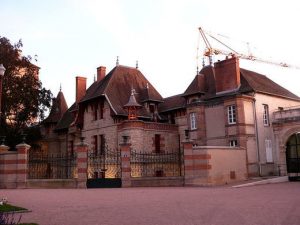 Louis Mantin, was a French aesthete, which is a person who has a special appreciation of art and beauty. He was also, “obsessed with death and the passage of time.” He wrote in his will that he wanted to turn his home into a museum after his death. He wanted to share his love of art, and his vast collection with others. However, his Will was very explicit in the details of how this would be carried out, and some might even say it was eccentric. In his will, he made a very specific and seemingly odd request, the museum would open 100 years after his passing.
Louis Mantin, was a French aesthete, which is a person who has a special appreciation of art and beauty. He was also, “obsessed with death and the passage of time.” He wrote in his will that he wanted to turn his home into a museum after his death. He wanted to share his love of art, and his vast collection with others. However, his Will was very explicit in the details of how this would be carried out, and some might even say it was eccentric. In his will, he made a very specific and seemingly odd request, the museum would open 100 years after his passing.
Mantin died in 1905, and though he made it very clear in his will what he wanted the house to be in 100 years, he didn’t make any provisions for the upkeep of the house in the meantime. Because nothing was specifically laid out, the house eventually fell into disrepair, because it was locked up and ignored. Eventually, worms and mold settled in among his statues and in the elaborate wallpaper. After a distant relative discovered Mantin’s will and initiated an extensive renovation project, the house was finally re-opened as a museum in 2010. It was five years late, but the will was finally carried out. I suppose that it took a little time to get the house back into a condition that would allow the house to become a museum.
Townspeople and tourists can now marvel at this once hidden world, that went completely untouched for a century, admiring Mantin’s eclectic collections, as well as his flushing toilet and heated floors, true luxuries for any home back in 1905. Mantin inherited a large fortune from his father, and since he was a bachelor, with no children, he used the money to start collecting the things that he loved. He was almost obsessive about it. 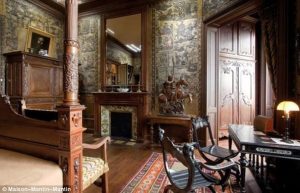
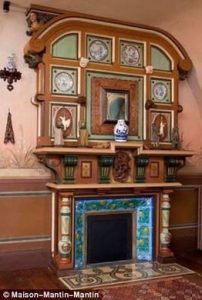 Egyptian relics, medieval locks and keys, monkey skulls, and stuffed blowfish. Mantin had strange taste, and since he inherited the money later in life, he knew that his time with his newly acquired collection would be short. He decided that the logical solution was to turn his home into a museum. He thought people might like to know how an artistic gentleman had lived at the turn of the century. The museum might be filled with odd relics, but when you consider how rare they are, their value in the world of art would probably make them priceless.
Egyptian relics, medieval locks and keys, monkey skulls, and stuffed blowfish. Mantin had strange taste, and since he inherited the money later in life, he knew that his time with his newly acquired collection would be short. He decided that the logical solution was to turn his home into a museum. He thought people might like to know how an artistic gentleman had lived at the turn of the century. The museum might be filled with odd relics, but when you consider how rare they are, their value in the world of art would probably make them priceless.

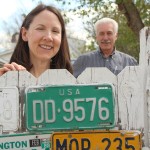 I don’t know for sure how it all started, but over the years, my father-in-law, Walt Schulenberg collected a number of old license plates that were both unique and average. My guess is that he found one that he really liked, and he saved it, putting it up on the wall of the garage. Before long, the number of plates grew, because there was always another unique license plate to add to the collection. After a while the license plate collection grew to include plates from the different states he had been in, and his son, Ron Schulenberg even brought him some from the countries he was in during Desert Storm…which were quite different from all the others.
I don’t know for sure how it all started, but over the years, my father-in-law, Walt Schulenberg collected a number of old license plates that were both unique and average. My guess is that he found one that he really liked, and he saved it, putting it up on the wall of the garage. Before long, the number of plates grew, because there was always another unique license plate to add to the collection. After a while the license plate collection grew to include plates from the different states he had been in, and his son, Ron Schulenberg even brought him some from the countries he was in during Desert Storm…which were quite different from all the others.
These license plates started out gracing the walls of the garage, which is a fitting place for such a collection, but as time went on, there were enough of then to warrant adding the barn shop my father-in-law had, and finally the back fence to his display areas. In reality, while I found these interesting to look at from time to time, my father-in-law’s license plate was not something that occupied any kind of a special place in my mind. I suppose that if I was a guy, I might have felt differently about it. It is a guy type of collection, after all.
After someone passes away, and you find yourself sorting through all their things, you begin to really get a feel for what was important to them. Not just the major things they had placed a high degree of importance on, but the lesser things too. The things they just liked, because they thought those things were cool. That was how it was for me, when we started going through my father-in-law’s things. No, I can’t say that I wanted those old license plates, but they were interesting. They were a reminder of my father-in-law, and the things he liked.
After the funeral, we took some pictures, as often happens after funerals, simply because many people who come, don’t live here and you want their pictures, because you don’t see them often enough. Many of the people in the family wanted their picture taken by the back fence, showing that collection of license plates. The other day, as I was looking through some of the old pictures, I came across those that were taken that day. It 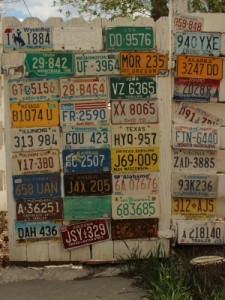
 made me think with interest about the array of license plates my father-in-law had collected, and in reality about the kind of man he was.
made me think with interest about the array of license plates my father-in-law had collected, and in reality about the kind of man he was.
The things that were cherished to him were really the life moments. Things like his knife and watch, his tools, his woodworking supplies and chair making supplies, and yes, the license place collection, were things that had a special meaning to him. They were like the stories of his life. They were the accomplishments he had made, the places he had been, and the reminders of just how precious life was. While the license plates were not something I was interested in receiving, I am very glad that I have pictures of them to remember his passion for life.

